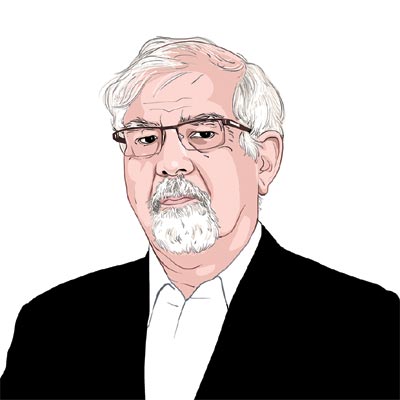Opinion They also serve who only stand and wait
Given global uncertainties and domestic inaction,the RBI should pause and take stock.
Just before the RBIs credit policy to be announced on July 26,a battle of opinions is raging in the pink pages. In one corner are the industrialists singing their favorite tune interest rates are too high,and the RBI should be careful about its zeal to contain inflation. Careful because this is the one instance where the phrase throwing growth out with inflation may have relevance.
In stark opposition to this view are the inflation hawks,birds that reside mostly in financial markets. Now everybody is an inflation hawk and a growth dove. What differentiates one from another is the allegiance to money control in the fight against inflation. In most parts of the world,the money tribe is near extinct. This may explain why there is an over-abundance of monetarists in India. And we must remember that it is easiest to be a monetarist. You dont have to know any math or economics except to calculate the rate of growth. In the olden days this used to take time and effort,but calculators and computers have made it possible for anyone to be a monetarist inflation hawk.
But this does not mean that the simplistic advice the monetarists are trotting out is wrong. The facts are straightforward after a benign inflation decade,roughly 1996-2007,inflation has surged to near double-digit levels for more than three years now. This level of inflation is simply not acceptable by anyone. It needs to be brought down. The question is,how?
One solution is to raise interest rates until the cows come home,or the inflation rate falls,whichever is sooner. The other approach is to identify the determinants of inflation,supply or demand,and then act accordingly. However,the latter approach is often identified,and not that inaccurately,as a do-nothing approach. As it happens,the do-nothing philosophy is in tune with the UPA government; fortunately,the RBI is independent (we hope) of the government.
So what should the RBI do at its meeting on July 26? Should it move the repo rate hawkishly towards the 8 per cent mark from the 7.5 per cent level today (the battlecry of the birds) or should it push the pause button and wait and watch? Such issues are best decided by looking at the data on inflation and growth.
Inflation: The three different indicators of inflation are the GDP deflator,the consumer price index,and what should not be used as an indicator of inflation,certainly in polite company,the wholesale price index. The table reports these indicators for the period January 2004 to June 2011. The peak inflation levels for the first two are around the 15 per cent level,and sometime in the first half of 2010. The peak level for the WPI was considerably lower at 10.5 per cent. Regardless of these peaks,the average inflation rate has declined,and for the CPI,the inflation level is about 6 percentage points below the peak. The trend is acceptable,but the level is still about 3 to 4 percentage points too high.
Growth: Two indicators of economic growth are provided GDP and industrial production,and for the latter there are two series,the old and the more comprehensive new series. Also reported is potential GDP growth. These figures are uncomfortable. After peaking at a near 10 per cent year-on-year growth rate in the second quarter of 2010,industrial growth is at levels lower than in the recession year of 2008 around 6 per cent. How steeply GDP growth falls in the second quarter (April-June) of 2011 will be known on August 30.
Policy instrument: The RBI policy rate is at a high 7.5 per cent today,and except for a brief flurry in mid-2008,this level is high by any standards. A more meaningful indicator of the tightness of monetary policy is the prime lending rate,and that for private commercial banks like ICICI is in the high teens. A real double-digit borrowing rate,with crawling industrial growth,should not be on the radar screen of any policymaker,especially a central banker.
There is also the domestic and international growth environment to consider. The domestic environment with several scandals and a comatose government is not exactly pushing demand to uncomfortably high levels. Internationally,politicians have taken over,and that is also never positive for growth. The Eurozone is in a perpetual Greek tragedy or farce mode (take your pick) and default by the US government is an unlikely but not a zero probability event. Commodity prices,especially oil,is in a cooling off stage and shouts of $150 oil have become considerably muted.
The RBI might also want to pause and look at what it has done to date. It has relentlessly raised interest rates in the blind belief that it is the only policy in town. It has stubbornly refused to acknowledge that inflation,especially in a globalised world,can often be supply-determined. If so,then raising the repo rates might look good to the birds,but is not necessarily good policy. All in all,a humble pause,and a wait and watch policy is what will constitute monetary leadership.
The writer is chairman of Oxus Investments,an emerging market advisory and fund management firm



